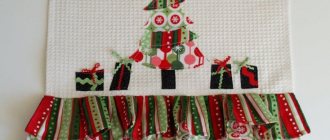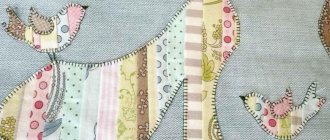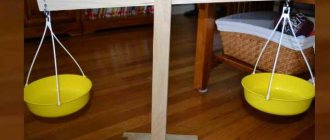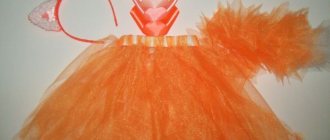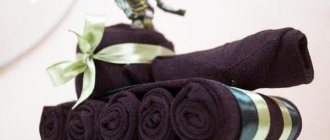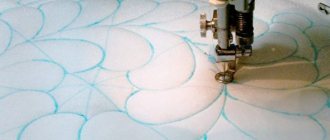Purchasing bedding is always associated with considerable costs, which for thrifty housewives is a blow to the family budget. The solution is to sew things yourself with your own hands. How to sew a plain, quilted or bonbon blanket is described below. The article also contains tips on how to determine the type of material, filler, and the principle of fabric calculation.
Types of DIY blankets
You can sew any item yourself if you rely on the recommendations of experienced craftswomen. Before you start sewing, you need to determine the type of future product as a whole, think about the front side, the back side, and the filling.
There are two types of blankets:
- Quilted products do not cake, the filling does not bunch up, but it is difficult to wash them because they are large, heavy, and bulky.
- Simple products consist of a cover and inner padding. Often the filling clumps together, spoiling the appearance, but washing is simplified since the inside can be removed.
Sewing the front side, depending on the technique, is the most energy-intensive process. This is especially acute when creating things in the patchwork style with your own hands. Products are assembled from small blanks, the standard sizes of which range from 10 by 10 cm to 30 by 30 cm and more. In prefabricated patchwork, the flaps are sewn together using the quilling technique, they are sewn onto the base.
Modular blankets differ from those created in the patchwork style in that the flaps are sewn together in the correct geometry. Blocks are square, rectangular, pentagonal. The process is labor-intensive, because sewing many blanks into a single fabric is not easy.
Denim synthetic blankets look original. They are practical, non-staining, but warm and durable. It is not recommended to quilt items made from denim fabric - this affects the appearance. Jeans items are taken for a picnic or a walk.
It takes a long time to sew blankets in the bonbon style on your own, but the result will please you, since the thing turns out to be warm and unusual. For children's blankets, natural fabrics in bright colors or with patterns are used.
Technology
The production of down and feather pillows is quite complex technologically. The most difficult thing has to be done at the stage of preparing and processing the future pillow filling.
This is how the process of receiving and processing raw materials is structured at the Kariguz enterprise. First, the raw materials arrive at the enterprise. Feathers are purchased in the northern regions: there they are of higher quality, since in northern latitudes birds have thicker plumage and are less susceptible to various diseases.
After receiving, the raw materials are weighed and transferred to a sealed ozonation chamber for disinfection. Then it goes to the laboratory and for veterinary control, where the quality indicators of the raw materials are assessed. If the bird was sick, the feather should not be used. If everything is in order, then the raw materials are sent for primary processing.
Next, the pen is washed. This is necessary in order to eliminate odors, dirt and other impurities from the pillow filling. The washing cycle lasts at least 2 hours, during which the machine washes approximately 60 kg of raw materials.
After washing, the raw materials are thoroughly wrung out and placed in a drying chamber. There, the feather is subjected to thermal antimicrobial treatment at a temperature of 130 degrees Celsius. After the drying chamber, the raw materials are cooled and sent for sorting. Feathers are sorted in special plywood machines. With the help of air flows, large, medium, small feathers and down are separated.
In parallel with the preparation of the filling, pillow covers are made in the sewing shop, leaving a hole on one side through which they are stuffed with down and feathers.
The finished feather of the same fraction enters the storage machine. This is where the pillow stuffing takes place. The cover is attached to a special pipe leading to the storage machine. The dispenser scales set the weight of the filler, and the feather begins to flow into the case through the pipeline. Filling stops when the required weight is recorded on the scales.
The pillow is then weighed and handed over to the seamstress to sew up the hole. At the final stage, the product is placed in a blower to remove fluff from the surface of the pillow. Packaged pillows are sent to the finished goods warehouse and sold to wholesale buyers. Blankets are produced using similar technology.
How to calculate fabric
The amount of material for a bed and a duvet is calculated differently. In the first case, the wide side of the cut is equal to the sum of the width of the mattress, two heights, plus an allowance of 12.5 cm. The blanket will hang from the bed, overlapping the side.
On the long side, the value is calculated by adding the length of the mattress, its height, seam allowances and overlap of 7.5 cm. For products without assembled borders, add 10 cm to the width and 5 cm to the length.
The width of the down cover is equal to the sum of centimeters measured along the wide side of the mattress, 2.5 cm for allowances. The long side of the product is calculated according to the same principle - 2.5 cm is added to the length of the mattress. Sewing a blanket with your own hands is simplified by choosing easy master classes.
Investments
Estimated costs for starting a business producing down and feather pillows include:
- Deposit for renting premises (300 sq. m.) – 120,000 rubles.
- Purchase of main equipment – RUB 6,000,000.
- Purchase of auxiliary equipment, office equipment and inventory – RUB 500,000.
- Purchase of raw materials and materials – 200,000 rubles.
- Advertising – 100,000 rubles.
- Business registration and other organizational expenses – RUB 150,000.
Total – 7,070,000 rubles.
How to choose material
The blanket consists of three parts: top, bottom and insulation. For each component, the material chosen is different, but for the first two it can be the same. The front side is made of fabric that does not cause allergic reactions. In addition to being hypoallergenic, the material is chosen with high strength.
The upper part of walking blankets for newborns, camping, and summer cottage options is made from water-repellent raincoat fabrics. For winter products, the thinnest furniture upholstery is used.
The front side is made stronger than the lining, which increases the durability of the item as a whole.
The lower part is made of satin, cotton fiber, twill, and silk. Cotton fabric gets dirty quickly, has a low level of breathability, and does not last long, so it is used for children's summer blankets. Winter padding blankets are made from calico and flannel.
Satin, silk, twill are distinguished by their lightness, dirt-repellent properties, and good vapor permeability. The disadvantage of these fabrics is slipperiness. Some will enjoy sleeping under such a blanket, while others will toss and turn.
If these options are not suitable, then bamboo canvas is the only solution. It feels like cotton fabric, but has a higher level of wear resistance. The fabric does not cause allergies, is antistatic, and has high mechanical strength.
Design
Sewing a blanket is simple at first glance, and this applies not only to its quilting, which will be discussed later. Have you tried washing a sweaty blanket? Say, after having the flu? If yes, then you know that it does not always fit into the machine and how difficult it is to wash it by hand. And what your work, which may have required several months of busy evenings, can turn into after it. So let's see how best to sew a blanket so that later there will be less hassle and less hassle.
A blanket, as you know, consists of a lining (underside), an insulating liner and a cover. To prevent the insulation from creeping or bunching up, the entire cake is either quilted, or the lining and the tire form a duvet cover into which the liner is placed. The last option, due to the efforts of advertisers pushing expensive products, has not been particularly popular lately, but for a homemade blanket from scraps it is advisable to consider it first, because in this case, most of the problems with washing the blanket and replacing the liner disappear. The liner always wears out faster than the tire, and washing a tire with underwear without it is equivalent to washing 2 sheets. If a window for the liner in the middle of the tire is undesirable for design reasons, then in the legs you can make a wide armhole from the lining fabric with an internal pocket-turn, like in a pillowcase. This, by the way, completely removes the problem of the reverse seam; any seamstress will immediately understand how much easier sewing is.
There is only one “but” in a blanket with a replaceable insert: if the bed does not have a footboard, then the insert will push out the pocket and the lining fabric will be visible. You can avoid this, without resorting to visible and hard fasteners of any kind, by using a wide border and/or choosing the appropriate lining material (see below). And once again, by the way, a blanket with an insert can be uninsulated for the summer. But we again ran into materials.
How to choose a filler
Synthetic fiber materials are used for insulation:
- holofiber;
- padding polyester;
- synthetic fluff;
- sheet synthetic winterizer, holofiber.
A synthetic winterizer blanket is lighter than the same thing made from holofiber, but tends to cake and lose its shape. These fillers quickly become damp, but are light, warm and harmless. They need to be quilted so that a blanket made of padding polyester or holofiber will last longer.
A fleece liner will make the product heavier and increase the price, but the item will be durable and warm. Fleece transmits moisture unevenly - more on the pile side than on the smooth side. The fleece fabric does not stretch or crawl.
Not just fluff and feathers...
Another direction is the production of pillows for pregnant women, nursing mothers and babies. It's no secret that everything related to small children and pregnancy costs a lot of money. And the high price is due to the increased demand for such products. It would seem like an ordinary orthopedic pillow with a synthetic filler, but it costs 2,500 rubles.
The main condition for the success of such a business is the presence of a competent technologist and designer. The appearance of the pillow should not just be unusual, but have a special configuration that will be useful and convenient for the future owner. The most common material for making such pillows is holofiber. It is lightweight, retains its shape perfectly, does not lose its qualities after washing and does not require special care.
Such production can be organized even without having large areas and expensive equipment. And sales points for products can be hundreds of private stores selling products for mothers and babies or an online store. Certain difficulties here can arise only when obtaining the appropriate certificates for products.
Master class: how to sew a blanket on padding polyester
You can learn how to sew a bedspread by preparing:
- dark fabric for the bottom, bright for the top;
- strong floss threads;
- padding polyester;
- sewing machine;
- needle;
- scissors.
On a flat surface, roll out the padding polyester and colored fabric, cut around the perimeter to even out the edges.
Place a third one on top of two materials - dark. The edges are aligned and trimmed. Secure the three-layer “pie” with pins.
Sew 2 long sides and 1 short side, leaving the opportunity to turn the product inside out. You should retreat 0.5 cm from the edge, as shown above.
Turn out the blanket.
On the fourth, unstitched side, you need to trim the padding polyester a little to make it shorter. Then fold the top fabric so that the edges of the padding polyester are hidden.
Sew all sides around the perimeter, retreating 0.5 cm. The photo shows how the seams are made from the front and back sides.
Now take a needle and thread 6 threads of floss into it.
Having threaded the needle twice in the center of the product, the edges of the thread are tied into two knots. The same actions are performed 8 more times. This is necessary so that the padding polyester blanket does not bunch up when washed.
This is what happened.
Equipment
The need for this or that equipment depends on the scale of production and the size of the start-up capital. For just 40,000 rubles you can purchase an installation for cleaning and producing pillows and feather beds. Similar offers can be found on Avito. The installation can remove dust and foreign matter from the pen (sand, stones, needles, etc.). Additionally, you only need a sewing machine for sewing covers. If you find sales for a small volume of products, you can start a small business even at home.
A serious business in the production of down and feather pillows requires large investments. The purchase of equipment alone will require at least 100 thousand dollars. The mandatory package includes an ozonation chamber for disinfecting feathers, a mini-laboratory for determining the quality indicators of raw materials, a washing machine for washing feathers, a drying chamber, a cooler, sorting chambers, sewing machines, storage machines for pillow stuffing, scales, blowing machines, auxiliary equipment and supplies.
Such equipment requires a room of up to 300 square meters. m. It is necessary to separately place warehouses for raw materials and finished products, a laboratory for analysis, a production workshop (washing and drying feathers), a sewing workshop, staff premises, and an office.
Other blankets
For the little ones
An ordinary blanket for a newborn should be sewn as stated above: size 120x120 cm, summer lining cotton linen; winter - flannel, calico or flannel. The tire is made of raincoat fabric, the insulation is definitely synthetic winterizer: holofiber is rough, fleece is heavy, but synthetic winterizer will last up to 2-3 years. Quilting is required, but the technological “harmfulness” of the padding polyester in this case will not do much harm, because the thing is small and not for show.
Transformable blanket for newborns
In the wake of the general fascination with transformability (oh, if only it were a cucumber core in a full glass... just kidding), “advanced” mothers are actively interested in blankets for newborns – transformers. But what’s interesting here is that the original publication (see figure) begins with the word “theoretically,” and then it is emphasized that the meaning of this innovation is primarily economic.
What prevented the author of the idea from showing off with enthusiasm? Zippers. Imagine having zippers on the sides and at the heads of your blanket. And you wake up with prints on your side. Or, which is no better, the lock has moved and caught your hair or something else. What will it be like for the little one with his thin, delicate skin in this case?
In general, this is not a case where ergonomics can be sacrificed for functionality. Not to mention the moral significance of the thing. There are patents for wedding rings with nail clippers and beer cap wrenches, but what's the point? If you really want to save a little on the birth of your baby or put your hands into his things, then it would be better to sew a very ordinary envelope for discharge from the maternity hospital; The pattern is given in Fig. You can save it and show it to your child later: look, this is where you once all fit.
Envelope patterns for discharge
Modular
How a modular blanket is constructed and sewn/knitted is shown in Fig. Its advantage is technological simplicity, no turning seams, no precise cutting and fitting. But in general, this is a better option than a blanket for a sofa: if it’s cold in the bedroom, then the spaces between the pillows will cool the body.
Modular blankets


